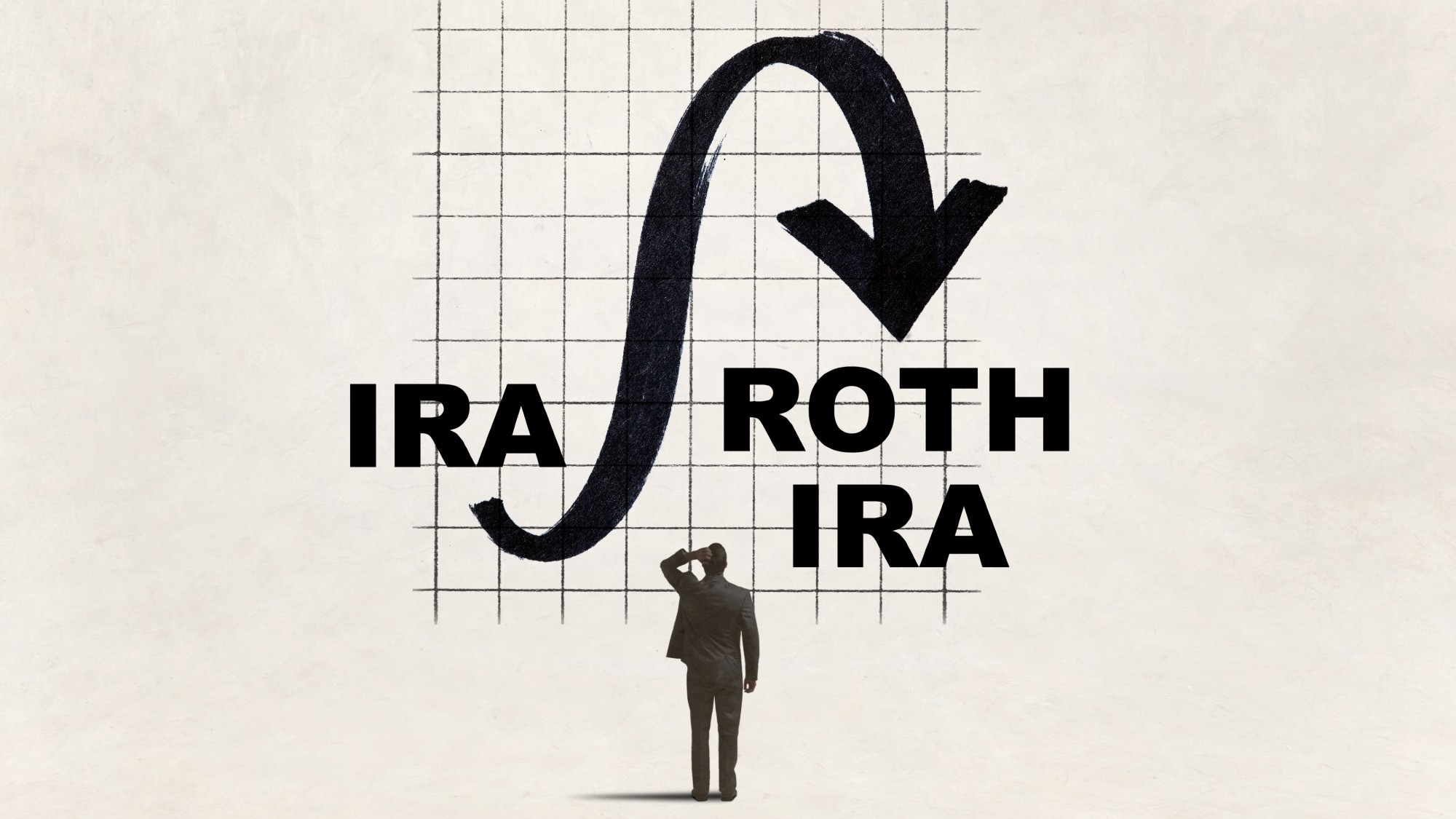Savings ISAs: different account types explained
How to make sure your hard-earned savings and investment returns are safe from tax

Rising interest rates are making savings accounts more attractive, but there is a higher risk of the taxman taking a chunk of your hard-earned returns.
The Bank of England has been increasing interest rates to tackle soaring inflation and some savings providers have responded with higher returns on their products.
But as savings rates rise, increasing numbers of savers face earning interest above the personal savings allowance (PSA), warned The Money Edit. The PSA lets basic-rate taxpayers earn £1,000 in interest on savings tax-free, dropping to £500 for higher-rate taxpayers.
The Week
Escape your echo chamber. Get the facts behind the news, plus analysis from multiple perspectives.

Sign up for The Week's Free Newsletters
From our morning news briefing to a weekly Good News Newsletter, get the best of The Week delivered directly to your inbox.
From our morning news briefing to a weekly Good News Newsletter, get the best of The Week delivered directly to your inbox.
While this might seem a lot, said MoneySavingExpert, “when interest rates rise, more people will need to pay tax” as the higher rates could push your returns above this threshold depending how much you have saved.
You can avoid this by sheltering your savings and investment returns from HMRC using an individual savings account (ISA).
ISAs explained
An ISA acts “like a bag you put your savings or investments inside to protect them from the taxman”, said The Times Money Mentor.
While the interest earned on a regular savings account is taxed on any income above the PSA, any dividends, interest or capital gains you earn through an ISA product are tax-free.
A free daily email with the biggest news stories of the day – and the best features from TheWeek.com
Around £73bn was held in adult and junior ISA accounts in the UK in 2020 to 2021, according to the latest HMRC figures, and around 2,000 savvy savers are “ISA millionaires”, with pots worth an average £1.4m, revealed InvestingReviews.
There are several types of ISA, and you can open as many of them as you want. But there are limits. First, “you’re only allowed to pay into one of each type each tax year”, explained financial advice company Wesleyan. Second, you can only put up to £20,000 into your ISAs per year. If you exceed that amount, you’ll be taxed. That allowance runs for the tax year, from 6 April to 5 April.
“It has become even more important to hold your investments in a tax-free wrapper,” said ThisIsMoney, “as a tax raid by Chancellor Jeremy Hunt will soon see tax-free allowances for both dividends and capital gains slashed.”
From 6 April, the annual capital gains tax-free allowance will be cut from £12,300 to £6,000 and then to £3,000 a year later. The dividend tax-free allowance is also set to be cut from £2,000 to £1,000 next month and to £500 from 2024. An ISA, however, “provides valuable protection against capital gains tax and dividend tax”, said ThisIsMoney.
Savvy investors can also save money when moving funds from an old ISA to a new one with better earning potential. If you withdraw and then reinvest the money, “you’ll be using up some or all of your annual ISA allowance”, said Moneyfacts. Instead, you can transfer the money from one type of ISA to another and retain the tax-free status.
Different types of ISAs
Cash ISAs: As with a regular savings account, there are different types of cash ISAs, such as easy-access products that allow you to withdraw your money at any point, or fixed-rate products that have more restrictions on accessing funds.
A cash ISA provides a fixed rate of interest, making it easier to plan your savings for “immediate needs”, but returns are often below the rate of inflation, making it “an expensive trap for long-term savings”, Dan Howe, of Janus Henderson Investors, told the Daily Express. A traditional savings account may also offer a more competitive interest rate, which should be balanced by the amount of tax an ISA might save.
Stocks and shares ISAs: This kind of ISA lets you invest in stocks, bonds, funds and some other investments tax-free through stockbrokers, financial advisers and fund supermarkets.
Where cash ISA returns are limited by the interest rate on offer, a stocks and shares ISA has the “potential for actively growing your money over time to beat inflation”, said Unbiased.co.uk. This does come with increased risk, as you can also lose money by investing and it may be hard to time when is best to make withdrawals, the financial website said.
There will also be fees to pay for investing in funds and to hold your money on an investment platform.
Innovative finance ISAs: Peer-to-peer (P2P) investors, or people who fund loans directly to other people rather than through financial institutions, can put their loans into what’s known as an innovative finance ISA (IFISA).
An IFISA offers higher interest rates than a cash ISA, but risks include “borrowers defaulting and the P2P platform not having an adequate contingency fund”, said Forbes. Unlike a cash or stocks and shares ISA, the IFISA isn’t protected by the Financial Services Compensation Scheme if a provider goes bust, so you could lose all your invested funds.
Lifetime ISA: A lifetime ISA (LISA) is a dedicated tax-free savings account to help you save for a mortgage deposit, or put towards your pension. Users can contribute up to £4,000 a year until age 50, and the government adds a 25% bonus up to a maximum of £1,000 a year.
You can only withdraw your money if using it to buy your first home (eligible on purchases worth up to £450,000), are aged 60 or over, or become terminally ill with 12 months to live, according to government rules. There is a 25% withdrawal charge if you take the money out for any other reason.
A 25% bonus on top of your savings sounds very attractive, said MoneyWeek, but “the key is to work out how you would feel if you weren’t able to buy your first home with the money, for example because the property you ultimately buy costs more than £450,000”. In this case, your money would be inaccessible until you hit 60. “If you withdrew the money earlier, the exit penalty would kick in,” the site added.
You can choose between a cash LISA or an investment LISA, and the £4,000 comes out of the annual tax-free allowance.
Junior ISA: ISAs aren’t just for adults. You can put up to £9,000 per year – separate to your own allowance – into a tax-free cash or stocks and shares junior ISA to build a nest egg for your child.
Your child can only withdraw the money when they turn 18 but they can manage it themselves from age 16. Ultimately, said FTAdviser, it is up to the child how they spend those funds once they reach adulthood, which may be seen as a blessing or a curse.
Flexible ISAs: Some providers will let you withdraw money from an ISA that has been contributed in the same tax year without losing the tax-free status, so long as those funds are replaced before the year-end. This is known as a flexible ISA. “Certain life events can make this flexibility attractive,” said Investors Chronicle.
Marc Shoffman is an NCTJ-qualified award-winning freelance journalist, specialising in business, property and personal finance. He has a BA in multimedia journalism from Bournemouth University and a master’s in financial journalism from City University, London. His career began at FT Business trade publication Financial Adviser, during the 2008 banking crash. In 2013, he moved to MailOnline’s personal finance section This is Money, where he covered topics ranging from mortgages and pensions to investments and even a bit of Bitcoin. Since going freelance in 2016, his work has appeared in MoneyWeek, The Times, The Mail on Sunday and on the i news site.
-
 Political cartoons for December 14
Political cartoons for December 14Cartoons Sunday's political cartoons include a new White House flag, Venezuela negotiations, and more
-
 Heavenly spectacle in the wilds of Canada
Heavenly spectacle in the wilds of CanadaThe Week Recommends ‘Mind-bending’ outpost for spotting animals – and the northern lights
-
 Facial recognition: a revolution in policing
Facial recognition: a revolution in policingTalking Point All 43 police forces in England and Wales are set to be granted access, with those against calling for increasing safeguards on the technology
-
 How to shop smarter with a grocery budget
How to shop smarter with a grocery budgetThe Explainer No more pushing your cart down the aisles on autopilot
-
 What are the pros and cons of a Roth conversion for retirement?
What are the pros and cons of a Roth conversion for retirement?Pros and Cons By converting a traditional IRA to a Roth IRA, retirees can skip paying taxes on their withdrawals
-
 4 often overlooked home maintenance tasks that could cost you later
4 often overlooked home maintenance tasks that could cost you laterThe Explainer A little upkeep now can save you money down the road
-
 What’s the best way to use your year-end bonus?
What’s the best way to use your year-end bonus?the explainer Pay down debt, add it to an emergency fund or put it toward retirement
-
 How can you tell if you are ready to retire?
How can you tell if you are ready to retire?the explainer All the preparation you need to sail off into your golden years
-
 How travel insurance through a credit card works
How travel insurance through a credit card worksThe explainer Use a card with built-in coverage to book your next trip
-
 How to invest in the artificial intelligence boom
How to invest in the artificial intelligence boomThe Explainer Artificial intelligence is the biggest trend in technology, but there are fears that companies are overvalued
-
 What’s the difference between a bull market and bear market?
What’s the difference between a bull market and bear market?The Explainer How to tell if the market is soaring or slumping.